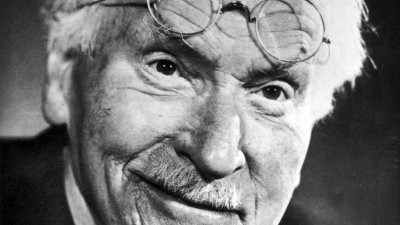What is Cryptomnesia?
Cryptomnesia occurs when a forgotten memory returns without it being recognised by the subject, who believes it is something new and original. It is a memory bias whereby a person may falsely recall generating a thought, an idea, a song or a joke, not deliberately engaging in plagiarism but rather experiencing a memory as if it were a new inspiration.
As much as I would like it to be, that definition is not an example of cryptomnesia. I went to Wikipedia and copied it out word for word. I am struggling for inspiration just now.
Most people have not heard of cryptomnesia. I first came across the term reading Carl Jung for a very interesting cultural history course I took during my last year at the University of Edinburgh. Jung used the term a lot, probably more frequently than any other significant writer, and took the phenomenon very seriously. He believed it to be an essential psychic function which prevented the mind being overloaded with information, but also attributed it to the revelatory aspect of artistic production, or any other form of genius. Individuals are able to extract material from the unconscious and, using their own knowledge, their own symbols, translate it into something new. Information, which may have been lost to the unconscious for years or never been made fully conscious, can suddenly spring to mind in the guise of original inspiration. This explains why separate individuals can come up with the same stories, the same revelations, without having any knowledge of each other at all.
Jung’s model of the unconscious is divided into two sections: the personal unconscious and the collective unconscious. The personal unconscious is biographical in composition, consisting of repressed or forgotten memories from the individual’s life. Many, including Jung’s mentor turned rival Sigmund Freud, would argue that the personal unconscious alone is the unconscious mind, and therefore the sole source of cryptomnesia. If that is the case, cryptomnesia can only occur when an individual has assimilated and subsequently forgotten information, only to recall it later on, believing it to be an entirely new idea. The phenomena of past life regression is thought to result from this kind of cryptomnesia, as most remembrances can be attributed to incidental stories or images from the individual’s past.
However, the collective unconscious, if it exists in any form, provides an even richer source of cryptomnesia. Essentially a body of primordial, symbolic, or, to use Jung’s term, archetypal, information, it can be accessed by anyone who is able to engage with their unconscious mind. Using this idea, past life regression can be seen as the result of an individual exploring the collective unconscious and extracting from it a symbolically corresponding life story.
Archetypal information is “empty and purely formal”, and must be interpreted through the conscious mind in a dialogical process. This means that there are infinite conscious manifestations of any piece of archetypal information, each containing material unique to the individual or society it emerged from. However, regardless of how it is manifested, archetypal information retains the same essential symbolic meaning. It is through this process that extremely similar stories and ideas can emerge spontaneously from different people in very different contexts, myths being the prime example. All societies, even those that exist in absolute isolation, have their own myths, which correspond to the symbolic patterns found everywhere. The same images, the same ideas, pointing in some way to a single source.
The nature of that source is up for debate. Even Jung intended his model of the psyche to be a functional representation rather than an explanation in actual fact. The collective unconscious was a means by which the individual could achieve self-realisation, for Jung, a numinous experience. He claimed to know the source was God but refused to elaborate on what he meant by God. However, the source could simply be genetic human nature. It could be a vast web of coincidence. It could be an endless cycle of cryptomnesia, signifying nothing.
Two nights ago, I watched The Secret in Their Eyes. It reminded me of Yann Martel’s novel Life of Pi, which I read when I was seventeen. The link was a simple message: if you do not know which story is true, choose the better one. Cryptomnesia can be depressing for a writer. It can make you burn endless sheets of paper. But it can also be extremely uplifting if you think about it in a different way.
Read more about this experience in Remembering Lily Marlene.

